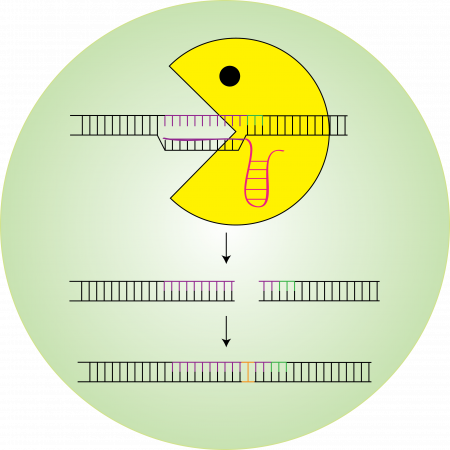
Clustered regularly interspaced short palindromic repeats, commonly known as CRISPR, initially identified as part of bacterial immune system, has been adapted and now widely used in genome engineering. CRISPR can recognize and cleave complementary strands of DNA through a protein called CRISPR-associated protein, or simply Cas. CRISPR/Cas9 (Cas9 is most predominantly used Cas protein) allows us to study genes, proteins, their function and phenotype on smaller or larger scales.
At IBC2, we previously optimized 3Cs (covalently-closed circular) system (Wegner, Diehl et al, eLife, 2019) for generation of CRISPR/Cas9 gene-targeted libraries. Libraries contain short sequences, complementary to the genes of interest (known as guide RNA sequences; gRNA). In collaboration with FCSC, we are performing CRISPR/Cas9 screens by introducing pools of gRNAs into cells, for efficient gene depletion, and finally selecting them using the appropriate readout (i.e. drop-out screen, reporter cell lines, etc). Genomic DNA is isolated from the selected cells and sequenced using Next-Generation Sequencing.
Frankfurt CRISPR/Cas Screening Center (FCSC)
 NEURODISEASE
NEURODISEASE ER-PHAGY
ER-PHAGY DNA DAMAGE
DNA DAMAGE